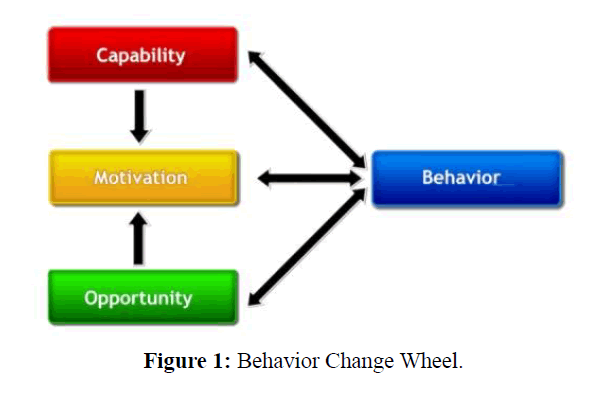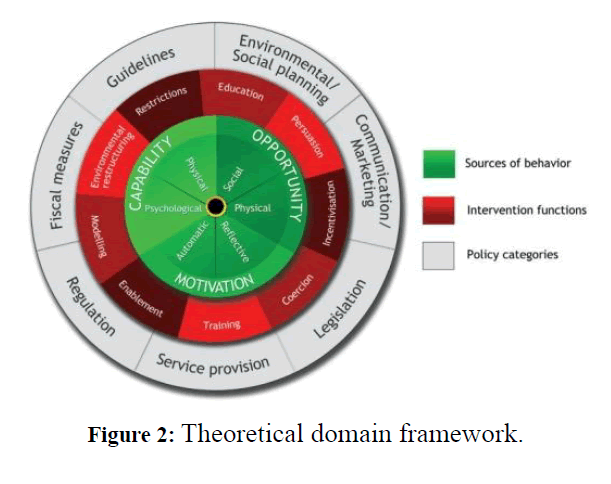Title: Chronic disease self-management digital interventions: A review and recommendations for future design and development of patient self-management interventions
Methods: A literature review is carried out in Google scholar, PubMed and Scopus databases to summarize the information on chronic disease self-management interventions, their impact on health outcomes, and reasons for patient non adoption of such interventions.
Keywords: Chronic disease, Self-management, Interventions, Digital interventions, Applications, User centered, health outcome
Background: User centered designs of chronic disease self-management interventions is a pre requisite for successful adoption and utilization of such interventions. Social, cultural, ethical factors and user group expectations from such applications should be taken into account to utilize maximum potential of digital health interventions. There is evidence to suggest that applications that are tailored to the individual, participatory, personally relevant, and contextually situated are more likely to promote behavior change. Such user-centered interventions will ensure greater patient adoption and utilization to optimize their full potential.
Conclusions: The review will discuss the potential of chronic disease self-management interventions on health outcomes. It has implications for future designs and it gives suggestions for patient centered portal designs to ensure patient engagement and utilization of maximum potential of chronic disease self-management interventions.
Keywords
Chronic disease; Patient engagement; Health
Introduction
Recently, chronic diseases have become a major focus of healthcare [1] and the modern advancements in the field of medicine have resulted in an increased lifespan for people living with multiple chronic diseases. Simultaneously, a significant consideration is directed towards strategies to promote patient autonomy and improving the quality of life of such patients for prolonged periods.
Many aspects of human life are influenced by the rapid development of Information and Communication Technologies. There is a consensus that a crucial component for chronic disease management is related to the essential services providing frequent and timely services for consultation, prescription, and medical advice rather than the intensive care or cutting edge medical equipment [2]. Taking this into account, digital interventions can be considered an effective tool to deliver such services for the management of multimorbidities. There has seen to be a shift in managing chronic diseases from the traditional Patient-Doctor relationship towards self-sufficient and self-managed patients who are now taking a leading position in their healthcare. Such patients now guide and plan their disease management strategies in partnership with their health care providers [3]. Furthermore, Health IT solutions allow patients to perform multiple tasks such as treatment adherence, modifying multiple health behaviors, and a regular contact with health care providers resulting in more engaged and empowered patients having better control over their health conditions.
Patient self-management will have a positive impact on the health outcome by increased patient activation in the management of their health. Moreover, such health IT solutions enable information sharing between patients and healthcare providers (HCPs) and support communication with HCP. While designing such interventions, the needs and expectations of the user group must be kept in mind and addressed for better adoption.
Literature Review
In recent years, patient self-management digital interventions have gained significant popularity. This is based on the assumption of the potential of such technology to modify the behavior of the target population thus reducing the healthcare needs and improved health outcomes. Such programs provide the patient authority over their healthcare by self-managing their underlying condition as opposed to other patient-directed education programs and skill training.
Patients' activation in their health management and engagement in preventive behavior can be increased by supporting patients’ self-management. It will not only impact patients’ use of traditionally provided health services but also positively impact health outcomes [3]. Activated patients follow healthcare recommendations and practice a healthy lifestyle because they are knowledgeable, skilled, and confident in the management of their condition.
High-quality care and self-management of chronic conditions are intertwined in each other. It can be achieved by behavior change, concerning healthcare access decisions and lifestyle modification. This is crucial to patients with illnesses requiring rigorous management, such as chronic conditions with recurrent exacerbations [4]. Health outcomes and quality of life can be improved in such patients by behavior change interventions for effective self-management. Developments in modern health technologies have made it possible to enhance the scope of delivery of interventions to support behavior change and patient self-management [5].
One-Size-fits-all approach of disease self-management interventions
Management of chronic diseases requires healthy behavior adoption and lifestyle modifications. Digital health IT solutions for patient self-management offer significant advantages in terms of quality of life and decreased hospital admissions [6]. Such novel approaches can help individuals develop and maintain behavioral modifications. Yet, most of the recent interventions for chronic disease self-management barely benefitted patients [6,7]. This might be explained by the one-size-fits-all and static approach regarding design, intensity, and mode of delivery without a focus on individual exacerbation patterns and actions [8]. A major reason of such interventions not reaching their full potential is their theoretical basis on individual theories and models of behavior change and their non emphasis on the context leading to a particular behavior. The underlying reflective process affecting behavior (e.g beliefs and feelings) are not considered thus failed to explicitly state how to change the behavior.
A basic issue of digital health IT solutions is the ethical concerns such as privacy and security issues associated with patient-facing tools [9]. Such issues can lead to problems from an ethical perspective [10] and need to be addressed for effective utilization of such technologies.
Theoretical grounding of interventions with comprehensive models of behavior change
Recently, a greater understanding of theoretical constructs linked with successful behavior change is brought about with the synthesis reviews of successful behavior change interventions. Two of these are behavioral change wheel and theoretical domains framework which are related and together they can be used to plan out intervention development by guiding a selection of a “Coordinated activities set”.
Behavioral change wheel: The behavioral change wheel is an evidence-based synthesis of 19 prior models of behavior change. It seeks to capture factors affecting behavior. At the center of BCW is a ‘behavior system’ involving three essential conditions: capability, opportunity, and motivation ('COM-B system'). This forms the hub of a 'behavior change wheel' (BCW) around which are positioned the nine intervention functions aimed at addressing deficits in one or more of these conditions; around this are placed seven categories of policy that could enable those interventions to occur [11] (Figure 1).
Figure 1: Behavior Change Wheel.
This model recognizes that behavior is part of an interacting system involving all these components. Interventions need to change one or more of them in such a way as to put the system into a new configuration and minimize the risk of it reverting.
“Capability is related to the psychological knowledge, skills, and physical ability to perform a certain task. Opportunity is divided into physical and social factors that promote or impede behavior within the individual and motivation encompasses all brain activity that provokes behavior, including automatic and reflective processes” [11-13].
Theoretical domain framework: This is related to BCW and provides a synthesis of constructs derived from behavior change theories. The 12 domains of the TDF include knowledge; social role and identity; emotion; skills; beliefs about capabilities, self-efficacy; environmental context and resources; beliefs about consequences; memory, attention and decision processes; behavioral regulation; social influences; motivation and goals; and the nature of the behavior. Each domain has a set of theoretical constructs that relate to it that comes from existing theories of behavior change. Because each domain of the TDF relates to a COM-B component, and using the two together allows for an expansion of the COM-B components into highly specific domains, TDF can be used to guide intervention development (Figure 2).
Figure 2: Theoretical domain framework.
Conclusions and Recommendations for Future Research
There is a need to develop user-centered interventions that are comprehensive, dynamic, and personalized to optimize the full potential of such technologies in chronic disease self-management. Patient self-management digital technologies should meet patients' needs, perceptions, and capabilities. Most of the recent interventions lack theoretical and scientific grounding. This is a leading cause of patient disengagement from such digital health solutions.
There is a need to study effective components of these interventions using behavioral change theory and theoretical domains framework as a lens to translate these into applications supporting patient self-management for effective adoption and utilization. This will not only help in enhancing the understanding of patient perspectives and attitudes towards such interventions but the user-centered designs will help promote patient adoption. An understanding of this attitude towards patient-centered digital technologies is important when decisions are made about technology design, development, and implementation. Such knowledge is crucial for an action-guiding anticipatory understanding of current behaviors and the level of motivation required bringing about a behavior change.
References
- Dowrick C, Dixon-Woods M, Holman H, Weinman J (2005) What is chronic illness? Chronic Illn 1(1): 1-6.
- Chow CK, Ariyarathna N, Islam SM, Thiagalingam A, Redfern J (2016) mHealth in Cardiovascular Health Care. Heart Lung Circ 25(8): 802-7.
- Bodenheimer T, Lorig K, Holman H, Grumbach K (2002) Patient self-management of chronic disease in primary care. Jama 288(19): 2469-75.
- Grady PA, Gough LL (2014) Self-management: a comprehensive approach to management of chronic conditions.Am J Public Health 104(8): e25-e31.
- Araujo-Soares V, Hankonen N, Presseau J, Rodrigues A, Sniehotta F (2018) Developing Behavior Change Interventions for Self- Management in Chronic Illness. European Psychologist 24: 1-19.
- Howcroft M, Walters EH, Wood-Baker R, Walters JA (2016) Action plans with brief patient education for exacerbations in chronic obstructive pulmonary disease. Cochrane Database Syst Rev 12(12): CD005074.
- Jonkman NH, Westland H, Trappenburg JC, Groenwold RH, Bischoff EW, et al. (2016) Characteristics of effective self-management interventions in patients with COPD: individual patient data metaanalysis. Eur Respir J 48(1): 55-68.
- Korpershoek YJG, Hermsen S, Schoonhoven L, Schuurmans MJ, Trappenburg JCA (2020) User-Centered Design of a Mobile Health Intervention to Enhance Exacerbation-Related Self-Management in Patients With Chronic Obstructive Pulmonary Disease (Copilot): Mixed Methods Study. J Med Internet Res 22(6): e15449.
- Hochheiser H, Valdez RS (2020) Human-Computer Interaction, Ethics, and Biomedical Informatics. Yearb Med Inform 29(1): 93-98.
- Denecke K, Bamidis P, Bond C, Gabarron E, Househ M, et al. (2015) Ethical Issues of Social Media Usage in Healthcare. Yearb Med Inform 10(1): 137-47.
- Michie S, Van Stralen M, West R (2011) The Behaviour Change Wheel: a new method for characterising and designing behaviour change interventions. Implementation science 6:42.
- Lenferink A, Brusse-Keizer M, van der Valk PD, Frith PA, Zwerink M, et al. (2017) Self-management interventions including action plans for exacerbations versus usual care in patients with chronic obstructive pulmonary disease. Cochrane Database Syst Rev 8(8): Cd011682.
- Holman H, Lorig K (2000) Patients as partners in managing chronic disease. Partnership is a prerequisite for effective and efficient health care. BMJ Clinical researched 320(7234): 526-7.



